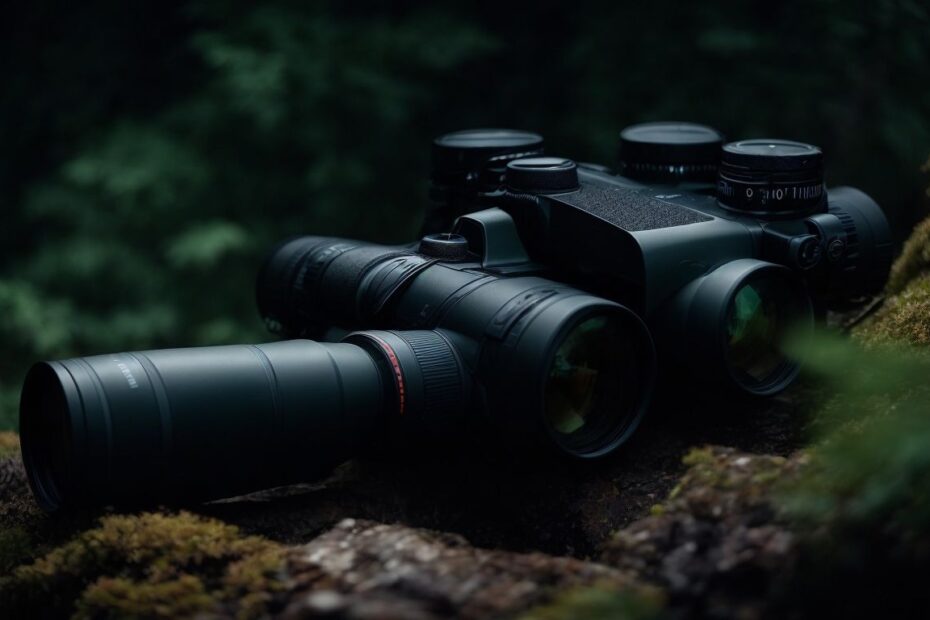Pros and Cons of Night Vision Binoculars
When it comes to choosing the right binoculars for low-light situations, two options stand out: night vision binoculars and thermal imaging binoculars. While both technologies offer enhanced vision in the dark, they each have their own strengths and limitations. In this section, we will delve into the pros and cons of using night vision binoculars, from their ability to amplify ambient light to their limited range and potential for distortion. By understanding these factors, you can make an informed decision on whether night vision binoculars are the right choice for your specific needs.
Pros:
Night vision binoculars offer several advantages in various applications:
- Enhanced visibility: Night vision technology allows users to see in low light or complete darkness, providing a clear view of the surroundings.
- Improved safety: Night vision binoculars are invaluable for activities such as hunting, wildlife observation, and security, as they help users navigate and identify potential threats at night.
- Versatility: Night vision binoculars can be used in a wide range of settings, from military operations to camping trips.
- Cost-effective: Night vision devices are generally more affordable compared to thermal imaging binoculars.
- Wide range of options: Night vision binoculars come in different generations, offering varying levels of clarity and performance.
Consider these pros when deciding between night vision and thermal imaging for your specific needs.
Cons:
Night vision binoculars have some drawbacks that should be considered before making a purchase.
- 1. Limited Range: Night vision technology has a limited range, typically around 100 to 200 yards, making them less effective for long-range observations.
- 2. High Cost: Night vision binoculars can be expensive, especially those with advanced features like digital zoom or image enhancement.
- 3. Ambient Light Dependency: Night vision devices heavily rely on ambient light sources. In complete darkness, their effectiveness is significantly reduced.
- 4. Image Distortion: Some night vision binoculars may produce a grainy or distorted image, making it challenging to see fine details.
Considering these cons, it is important to evaluate your specific needs and use cases before deciding whether night vision binoculars are the right choice for you.
Pros and Cons of Thermal Imaging Binoculars
When it comes to choosing the right binoculars for your specific needs, understanding the pros and cons of each type is crucial. In this section, we will take a closer look at the benefits and drawbacks of thermal imaging binoculars. From enhanced detection capabilities to potential limitations in certain environments, we will examine the various aspects of thermal imaging binoculars so you can make an informed decision.
Pros:
- Enhanced Vision: Night vision binoculars allow for clear visibility in low light conditions, aiding in tasks such as hunting, surveillance, and wildlife observation.
- Better Detection: Thermal imaging binoculars can detect heat signatures, making them useful for search and rescue operations, military applications, and security purposes.
- Increased Safety: Both night vision and thermal imaging binoculars provide an added level of safety, ensuring better situational awareness and reducing the risk of accidents.
- Versatility: Night vision and thermal imaging binoculars can be used in various environments, including dense forests, pitch-dark nights, and even through fog or smoke.
When choosing between night vision and thermal imaging binoculars, it is important to consider your specific needs and requirements. For activities such as hunting or wildlife observation, night vision may be more suitable. However, for applications involving detection or surveillance, thermal imaging may be the better option. Ultimately, it is important to weigh the pros and cons of each to make an informed decision.
Cons:
Night vision binoculars have their drawbacks that need to be considered before making a purchase. Some negative aspects of night vision binoculars include:
- limited range
- reduced image quality in certain conditions
- high cost
When it comes to range, night vision binoculars typically have a shorter viewing distance compared to thermal imaging binoculars. Additionally, image quality may be compromised in extreme darkness or when there is glare from bright light sources. Lastly, night vision binoculars tend to be more expensive compared to thermal imaging options. These disadvantages should be carefully considered when deciding which type of binoculars to choose.
Which is Better for Specific Uses?
When it comes to choosing between night vision and thermal imaging binoculars, the decision ultimately depends on your specific needs and intended use. In this section, we will discuss the pros and cons of each technology for four different purposes: hunting, military/law enforcement, wildlife observation, and security. By understanding the strengths and limitations of both night vision and thermal imaging, you can make an informed decision on which type of binoculars best suits your needs.
1. Hunting
When it comes to hunting, selecting the perfect binoculars is crucial for a successful experience. Here are a few steps to keep in mind:
- Assess your hunting environment – determine if you’ll be hunting during the day, at night, or in low-light conditions.
- Decide on a budget – set a price range for your binoculars, taking into consideration your specific needs and preferences.
- Research night vision binoculars – if you plan on hunting during the night or in low-light conditions, explore the various types of night vision technology available.
- Research thermal imaging binoculars – if you want to detect heat signatures and track animals in the dark, consider the advantages of thermal imaging technology.
- Test and compare options – visit a store or read reviews online to physically test and compare different binoculars that meet your hunting requirements.
- Choose based on comfort and usability – select a pair of binoculars that feel comfortable to hold and use for extended periods during your hunting trips.
Remember, finding the perfect binoculars for hunting is a personal decision based on individual preferences and needs. Consider factors such as range, image quality, and durability to make the best choice for your hunting adventures.
2. Military/Law Enforcement
Military and law enforcement professionals require specialized binoculars for their operations. When considering night vision and thermal imaging binoculars, here are the key factors to consider:
- Opt for binoculars with high-resolution night vision capabilities to enhance situational awareness in low-light conditions.
- Choose binoculars with long detection and recognition ranges for better target identification and assessment.
- Look for binoculars with durable construction and waterproof features to withstand harsh environments and weather conditions.
- Consider the weight and ergonomics of the binoculars for comfortable use during extended periods of surveillance or tactical missions.
- Ensure the binoculars have advanced features like image stabilization and integrated compasses for enhanced functionality.
3. Wildlife Observation
When it comes to observing wildlife, both night vision and thermal imaging binoculars can be useful tools. Here are some steps to consider when using these technologies:
- Research and choose the appropriate binoculars for wildlife observation.
- Familiarize yourself with the specific features and functions of the binoculars.
- Set up your equipment in a comfortable and concealed location.
- Adjust the settings of the binoculars to optimize your viewing experience.
- Scan the area for wildlife activity using the binoculars.
- Take note of any interesting behavior or sightings.
- Respect wildlife and observe from a safe distance to avoid disturbance.
- Capture photos or videos to document your observations, if desired.
- Reflect on and analyze your wildlife observations for further study or enjoyment.
4. Security
In terms of security, utilizing night vision or thermal imaging binoculars can provide enhanced visibility and situational awareness. Here are some steps to consider when using these technologies:
- Identify the specific security needs and objectives.
- Research and choose the appropriate type of binoculars based on the intended use.
- Understand the operational range and capabilities of the binoculars.
- Select a model with features such as long battery life, durability, and weather resistance.
- Train and familiarize yourself with the operation and settings of the binoculars.
- Regularly maintain and calibrate the binoculars for optimal performance.
- Consider integrating the binoculars with other security systems for a comprehensive approach.

From the gentle rustling of leaves to the distant chirping of birds, the outdoors has always been my sanctuary. With an innate love for nature, I find solace in the embrace of the wilderness. Whether hiking up scenic trails or simply taking a stroll in the park, the outside world offers endless wonders to discover.
But of all the outdoor activities, bird watching is special. Armed with a trusty pair of binoculars, I spent countless hours observing the magnificent dance of birds in their natural habitat. The thrill of spotting a rare species or simply appreciating the beauty of common birds in action is an experience that never gets old.
For me, binoculars are more than just an optical tool; they are a gateway to a world often overlooked. Every glance through those lenses is an opportunity to connect, learn, and be mesmerized by the avian wonders of our world.

